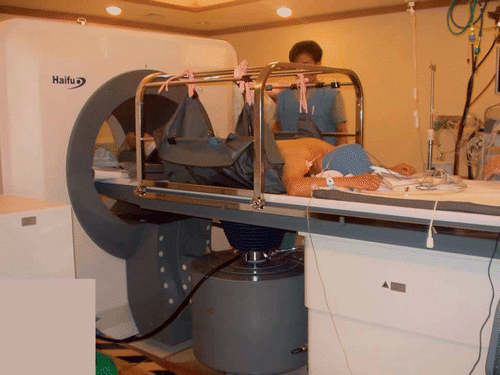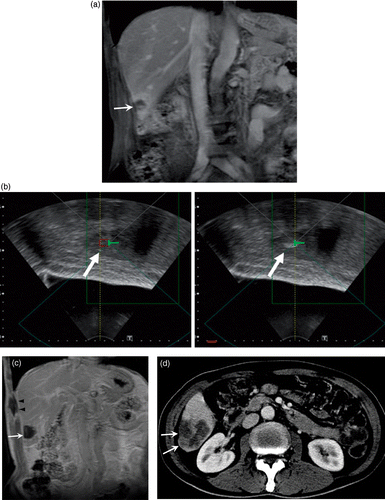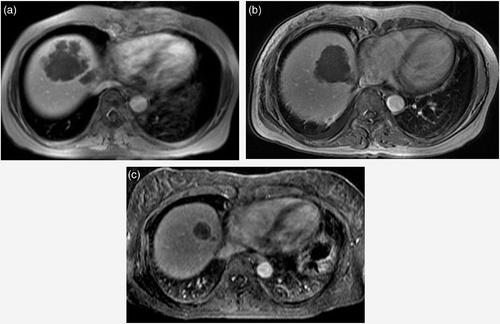Figures & data
Table I. Summary of findings in colon cancer group (10 cases). All patients had chemotherapy treatment.
Figure 1. Picture of the HIFU device during an ablation procedure. The patient is under general anesthesia and in the prone position for treatment of metastatic tumor in the left lobe of the liver.

Table II. Summary of findings in stomach cancer group. All patients had chemotherapy treatment.
Figure 2. Targets were ablated using mostly multiple HIFU row ablation zones with single ellipsoidal HIFU ablation zones when necessary. Deep portions were targeted first with shallower areas targeted subsequently.

Table III. Classification of results into four categories.
Figure 3. A 63-year-old man with multiple hepatic metastasis from colon carcinoma. Initial contrast enhanced coronal T1-weighted MR image shows one (arrow) of three metastatic nodules to the right lobe of liver (a). Ultrasonographic images showing the target before (b, left image) and after HIFU ablation (b, right image) demonstrate the hyperechoic changes representing optimal ablation. Follow-up contrast-enhanced coronal T1-weighted image two weeks after HIFU shows complete coagulative necrosis of the lesion (arrow). Pericostal ablation is noted in the sonification port (arrowheads) (c). Further follow-up contrast-enhanced CT 114 days after HIFU shows interval increase of the tumor size (arrows), indicating recurrence (d).

Figure 4. A 50-year-old woman with multiple hepatic metastasis from stomach carcinoma. Initial contrast-enhanced axial T1-weighted MR image shows one of multiple metastatic nodules in both lobes of the liver (a). Follow-up T1-weighted image two weeks after HIFU shows complete coagulative necrosis of the lesions (b). Although further follow up 107 days after HIFU shows progression of new lesions at non-ablated portions of the liver, no recurrence was seen at the ablated sites and decrease in size of the ablated sites are seen (c).
